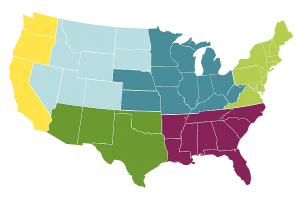Why Plant Hydrangeas?
Hydrangeas are some of America's most beloved flowering shrubs. You can train and shape them into topiary-like trees, use them to create hedges for property borders, or just let them go all wild and natural in any full to half-shade spot. The flower presentations and color choices are pretty varied, with Mopheads, Lacecaps and Oak Leafs leading the pack of white to pink to red, purple and blue blooms. Many varieties are well-suited to growing in containers, which make hydrangeas a wonderful addition to deck and patio sitting areas.
